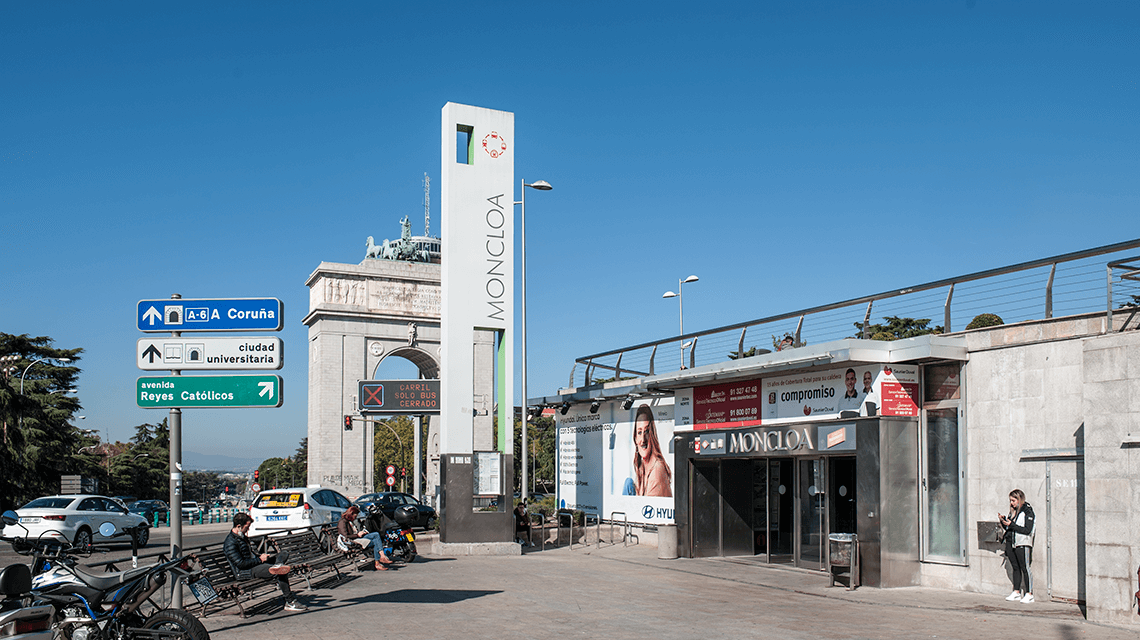For roughly half a year, part of the Moncloa Transport Hub, in Madrid, is air-conditioned using geothermic energy, that is sustainably sourced from solar panels.
This was possible thanks to project Geobatt, which had the backing from the Consorcio Regional de Transportes of the Madrid regional government.
"The project includes drilling a set of geothermal boreholes at 150-meters-deep, taking advantage of an old metro tunnel as a geothermal field, which entailed overcoming a series of challenges across its execution, such as the limitation of the drilling gauge of the machines or the limitations of ventilation and gas evacuation, without causing interference with the hub's regular functioning", says Miguel Martín, Innovation Project Manager at Sacyr Engineering and Infrastructure.
On top of the buses going in Moncloa Transport Hub, it is directly connected to the Metro de Madrid platforms.
The waiting area for travelers is affected by all the heat generated from the subway, the buses that operate at the loading and unloading docks, and especially by the sun exposure that heats the asphalt on the exterior surface, covered by the hub itself, so it requires a lot of investment in air conditioning.
Geothermal energy takes advantage of the thermal inertia of the ground and combined with heat pump technology, provides an air conditioning system using renewable energy in the most efficient way possible.
Currently the existing ones have 1.2 MW, approximately each chiller of 400 kW, and the expansion would be for a total of 400 kW from geothermal. “The concept of this project is to scale the installation to supply about 33% of all the energy demand of the hub in a geothermal renewable way in the future"."We have also included redox flow batteries to store electrical charge and some thermal charge in the electrolyte, that is, we take advantage of the volume of fluid as inertia or thermal storage. If it were to work, in the future we could achieve that much of the air conditioning energy consumed by the hub would be renewable, coming from photovoltaic installations or similar. Thermal energy would be used for air conditioning and electrical energy to drive the compressors of the heat pumps and chillers”.
“The demonstration consists of two modules. One contains the heat pump connected to the boreholes and that contributes to the air conditioning of the Exchanger, while the other contains the redox flow battery that is recharged by a photovoltaic solar installation, responsible for the energy supply to the heat pump and that we use as an auxiliary energy supply, this energy being 100% renewable,” says Jack Antonio Witt, Engineer at the Installations Department of Sacyr Construction.
This way, the demonstration has become the first location with hybrid geothermal heat pumps with redox flow batteries and photovoltaic solar panels.
”We want Geobatt to act as a demonstration for the different administrations to see the geothermal potential of the city and Sacyr's technological capacity to optimize the use of these resources in other city infrastructure," says Miguel.
This project could be replicated and expanded in these same facilities, increasing the number of boreholes and heat pumps and the cooling capacity.
The project “Hybridization of geothermal energy with flow batteries for the air conditioning of zero-energy tertiary buildings (GEOBATT)", developed by Sacyr, Energy Storage Solutions, Universidad Politécnica de Madrid, Universidad Carlos III and the IMDEA Energy Foundation, and with file number RTC-2017-5955-3, has been co-financed by both the Ministry for Science, Innovation and Universities (State Research Agency) as for the European Regional Development Fund (ERDF) in the context of the Challenges-Collaboration call (2017) of the State Research, Development and Innovation Program Oriented to the Challenges of Society, within the framework of the State Scientific and Technical Research and Innovation Plan 2013-2016. The main objective of the project is therefore framed within the Theme Objective of the Operational Program associated with the aforementioned call: "To promote technological development, innovation and quality research”.
